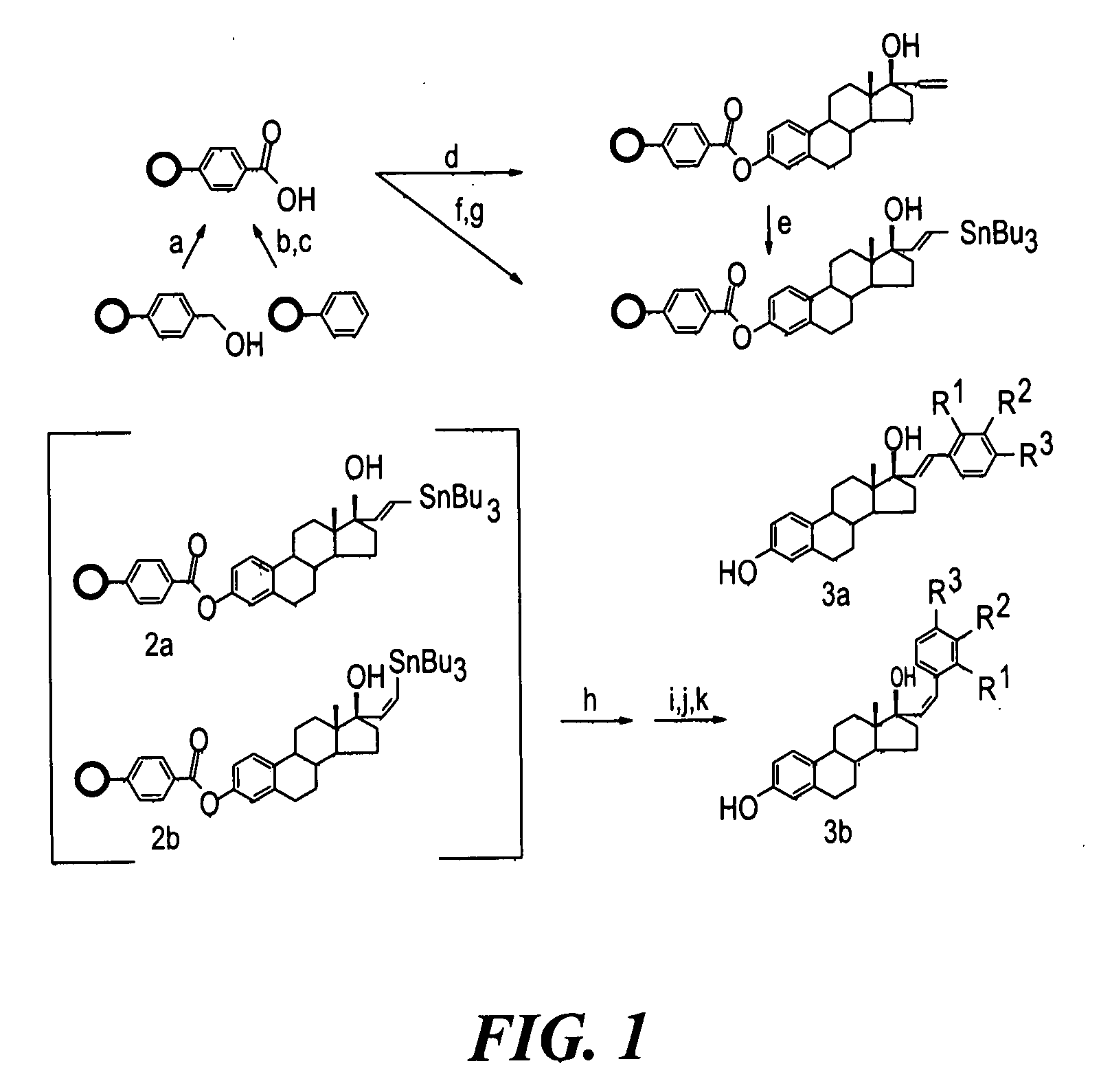Steroidal antiestrogens and antiandrogens and uses thereof
a technology of antiandrogens and steroids, applied in the field of steroidal antiestrogens and antiandrogens, can solve the problems of non-hormonal effects, accompanied by major side effects, antiandrogens have not been as successful in the treatment of prostate cancer, etc., to reduce the incidence and severity of side effects, improve the long-term prognosis, and improve the effect of prognosis
- Summary
- Abstract
- Description
- Claims
- Application Information
AI Technical Summary
Benefits of technology
Problems solved by technology
Method used
Image
Examples
examples
[0248]The following examples are presented to illustrate the advantages of the present invention and to assist one of ordinary skill in making and using the same. These examples are not intended in any way to otherwise limit the scope of the disclosure.
[0249]Preferred antiestrogens / antiandrogens for the prevention or treatment of its corresponding hormone-related disorder acting to inhibit estrogen / androgen action may be prepared accordingly as follows:
example i
Synthesis and evaluation of steroidal antiestrogens at the 17α-Position of Estradiol
[0250]Solid Phase Synthesis of 17α-substituted Phenylvinyl Estradiols:
Materials
[0251]Reagents and solvents were obtained from commercial sources (Aldrich and Sigma) and were used without further purification. Wang resins and carboxylated polystyrene resins were obtained from Novabiochem. The loading capacities of the resins, 0.75 mmol g−1 for the Wang resin and 2.47 mmol g−1 for the polystyrene resin, were determined by the manufacturer.
General Methods
[0252]A specially designed flask which had a glass frit, through which the reaction mixture could be filtered by applying pressure, was used for the solid phase synthesis. Purifications for the intermediates were done by rinsing resins three times with the following solvents: CH2Cl2, THF, DMF, MeOH, CH2Cl2. The cleaved products were purified via silica gel column chromatography using the appropriate solvents and were characterized by melting point, NMR,...
example ii
Development of Antiandrogens
[0269]The cellular target for antiandrogen therapy, the androgen receptor (AR), is a member of the nuclear receptor superfamily which has been studied extensively over the past decade (Tsai, 1994). Members of this receptor bear a strong structural similarity (homology) and utilize similar signaling pathways to express their biological actions. At the molecular level, the AR, like the other steroid hormone receptors, is composed of discrete domains that are responsible for specific functions. The hormone binding domain (HBD), the sequence of amino acids near the N-terminus of the AR, recognizes and binds testosterone with high affinity but not other hormones or small endogenous molecules (Weatherman, 1999; Simons, 1998). This region of the receptor has been examined using X-ray crystallography to elucidate the amino acid residues responsible for the recognition of specific hormones. The hormone binding domains on the estrogen receptor (ER), progesterone re...
PUM
 Login to View More
Login to View More Abstract
Description
Claims
Application Information
 Login to View More
Login to View More - R&D
- Intellectual Property
- Life Sciences
- Materials
- Tech Scout
- Unparalleled Data Quality
- Higher Quality Content
- 60% Fewer Hallucinations
Browse by: Latest US Patents, China's latest patents, Technical Efficacy Thesaurus, Application Domain, Technology Topic, Popular Technical Reports.
© 2025 PatSnap. All rights reserved.Legal|Privacy policy|Modern Slavery Act Transparency Statement|Sitemap|About US| Contact US: help@patsnap.com



